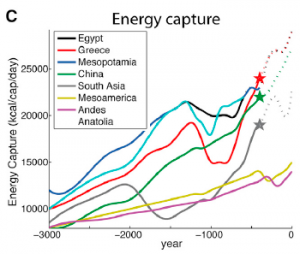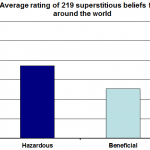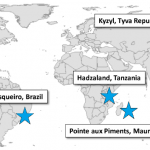The period between the 5th and the 3rd century BCE was a fertile time for the world’s religions. In India, Buddhism and Jainism began to take hold. In China, Confucianism and Daoism likewise attracted mass appeal. And Europe saw the golden age of Greek philosophy.
What these movements have in common is that they all emphasize spirituality, self-discipline, and selflessness. And in doing so, they all are heavily moralizing.
According to a new study by Nicholas Baumard (University of Pennsylvania) and colleagues, this was no coincidence. In all cases, they suggest, it was driven by increasing affluence – specifically the increase in agricultural output that provided energy security and free time to ponder higher thoughts.
They compared these three regions with others that did not undergo enlightenment movements of this kind – in Egypt, Mesopotamia, Mesoamerica, and the Andes.
They looked at various factors including the population size of the various states and their surface area – which they took as a measure of political complexity. They also examined population growth and the population of the main city.
 The final factor they looked at was energy capture. That’s how much energy – that’s how much energy (in the form of food – including animal feed – and other energy sources) is available per person.
The final factor they looked at was energy capture. That’s how much energy – that’s how much energy (in the form of food – including animal feed – and other energy sources) is available per person.
They looked at how each of these factors had changed over 3000 years up till 0 CE. By plugging the data into a mathematical model, they could see how effective they were at predicted when and where the emergence of ‘axial’ religions occurred.
They found that political complexity did not predict the emergence of religions, but affluence did.
In particular, there was a sharp threshold in energy capture. Once a society crossed the 20,000kcal/day level, axial religions were much more likely to emerge.
The size of the largest city also emerged as an important factor. However, total population size and the surface area of the state were unimportant.
The authors suggest several possible explanations. Maybe the surplus energy enabled these cultures to create a class of individuals with enough leisure time to become scholars or priests – although they point out that this would not explain why these new ideologies had similar pro-social content. Another is that affluence promoted a new way of life that fitted better urban, cosmopolitan societies of the large city states.
Their preferred explanation is that energy security shifted society from a ‘fast’ strategy, focussed on high birth rates and less nurturing, to a ‘slow’ strategy focussed on long-term investment in co-operation and self-actualization.
Now, they’re quick to point out that the data are very rough. And Ed Slingerland, who has extensively studied Asian religions, argues that the whole concept of an ‘axial age’ is outdated.
These results directly contradict a school of thought that says moralising gods were invented early on, to strengthen group cohesion. For example, one recent study concluded that societies developing in tough environments were more likely to create moralizing gods.
However, that same study also linked moralising gods to socially stratified societies – as did another, looking also at early cultures. And a study of modern cultures linked belief in moralising gods to complex, large scale societies.
So there are some similarities to all these studies. Social stratification, after all, depends on surplus energy generation (so the wealthy can live off the work of the poor).
But where they disagree is over the timing and the implications. Did moralising Gods enable a wealthy, complex society – or are they simply a byproduct?
![]() Baumard, N., Hyafil, A., Morris, I., & Boyer, P. (2015). Increased Affluence Explains the Emergence of Ascetic Wisdoms and Moralizing Religions Current Biology, 25 (1), 10-15 DOI: 10.1016/j.cub.2014.10.063
Baumard, N., Hyafil, A., Morris, I., & Boyer, P. (2015). Increased Affluence Explains the Emergence of Ascetic Wisdoms and Moralizing Religions Current Biology, 25 (1), 10-15 DOI: 10.1016/j.cub.2014.10.063
 This article by Tom Rees was first published on Epiphenom. It is licensed under Creative Commons.
This article by Tom Rees was first published on Epiphenom. It is licensed under Creative Commons.















